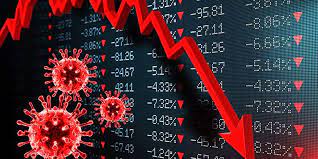Supply shortages continue to hit factories in the United States, following the strong rebound in demand for goods and services in line with the reopening of the economy. According to the U.S. Census Bureau, new orders for manufactured durable goods declined by 1.3% m/m in April (March: +1.3% m/m) – the first decline in 11 months.
The preceding partly reflects the global shortages of semi-conductor chip, disrupting auto production during the review period. Accordingly, new orders fell mostly for (1) transportation equipment (-6.7% m/m vs March: -3.1% m/m) and (2) military capital goods (-25.8% m/m vs March: -11.7% m/m). Meanwhile, orders for non-defence capital goods excluding aircraft (a category that tracks business investment) improved by 2.3% m/m (March: +1.6 m/m).
Although the supply chain constraint remains an issue in the economy, business investment, as indicated by the non-defence capital goods orders, contains hopeful signs. Consequently, we believe the manufacturing sector will remain healthy over the medium term as new orders improve gradually, given the latest stimulus package (USD1.90 trillion) rolled out in the economy.
According to the United States Department of Labor, the initial jobless claims in the U.S. fell for the fourth consecutive week to 406,000 in the week ending 22nd May (vs week ending 15th May: 444,000).
Although the preceding is still well above the average during the pre-pandemic level (c. 220,000), it is the lowest level for initial claims since 14th March 2020 (256,000). We believe the major contributing factor to the decline is the ease of restrictions on business activities as COVID-19 infections continue to decline amidst the rapid vaccination campaign in the country.
Accordingly, several states have begun shutting down their extended benefits programs as businesses reopen, despite debating whether the aid makes it more difficult for employers to hire workers. Given the sustained reopening of the economy amidst a robust vaccination campaign, we expect the slacks in the labour market to dissipate. Accordingly, we expect the initial jobless claims to continue to decline in the coming months.
Global markets
Global stocks staged a massive comeback this week as investors’ sentiments were buoyed by renewed optimism that the US will spearhead the global economic recovery.
This was underpinned by (1) reports that the US President, Joe Biden, will propose a USD6.00 trillion spending plan for the 2022 fiscal year and (2) strong labor market data in the US.
In the US, the DJIA (+0.8%) and S&P (+1.1%) were poised for a weekly gain following the bounce in tech stocks earlier in the week, amid strong labor market data, which showed that unemployment claims fell to a new pandemic low. In Europe, the STOXX Europe (+0.9%) and FTSE 100 (+0.4%) posted gains as risk sentiment strengthened, as the strong economic data from the US reinforced hopes of a robust economic recovery.
Asian markets posted positive performances, with the Japanese (Nikkei 225: +2.9%) and Chinese (SSE: +3.3%) markets receiving a massive boost from the rally on Wall Street. Similarly, the Emerging (MSCI EM: +1.8) and Frontier (MSCI FM: +0.5%) stocks also mirrored the upbeat mood across global equities consequent on the gains in China (+3.3%) and a robust gain in the Vietnamese (+2.8%) market, respectively.


















